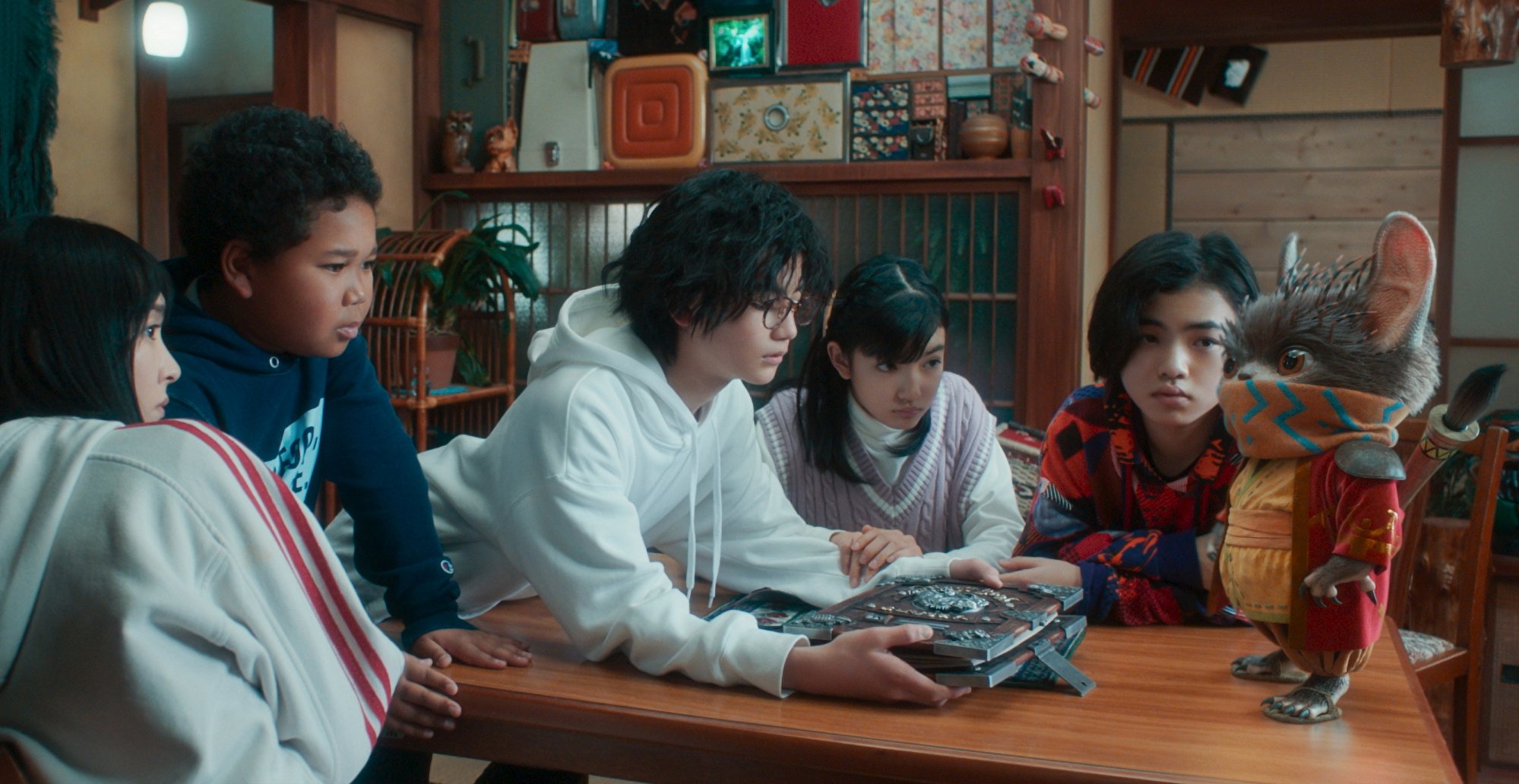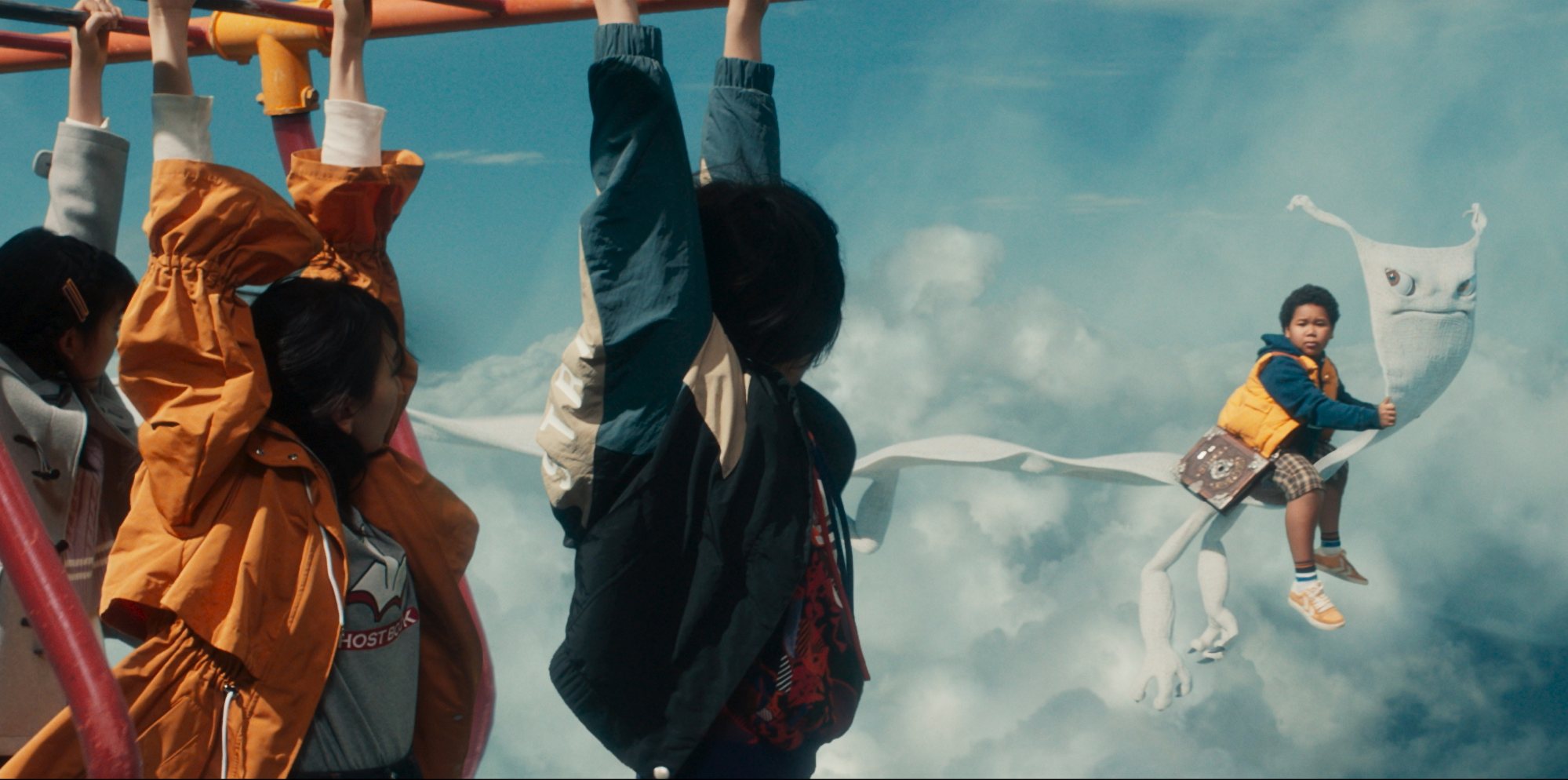
Explainer | From My Neighbour Totoro to Yokaipedia, Japanese ‘yokai’ movies and what you need to know about the mythological creatures
- Yokai are supernatural entities from Japanese folklore that can assume different forms – from animals to humans to inanimate objects
- The ’60s series GeGeGe no Kitaro helped popularise yokai in modern culture, while films like My Neighbour Totoro and Spirited Away took them into the mainstream
Takashi Yamazaki’s fantastical adventure Yokaipedia, which opens in Hong Kong cinemas this week, tells the story of three middle-schoolers from a small Japanese town who must do battle with a host of mythological creatures, known as yokai, to save their ailing classmate.
In the film, these otherworldly creatures take on a variety of different forms and wield unique powers, challenging the young protagonists to overcome them through a combination of intelligence and strength, with help from the eponymous magical tome of the title.
But what exactly are yokai, and how have they featured in Japanese cinema over the years?
Essentially, yokai are supernatural entities from Japanese folklore that have existed in myths and legends for as long as there have been stories to tell.
Similar to fairies, nymphs or sprites from Western mythology – rather than ghosts or demons – yokai are not inherently evil or dangerous, although different types can prove more malevolent or benevolent to humans depending on the circumstances.
Different yokai can assume different forms – ranging from animals such as foxes, cats or snakes to human shapes – or even resemble inanimate objects like lanterns or even tofu. In Yokaipedia, one of the spirits encountered takes the form of an enormous dragon, while another resembles an ordinary children’s climbing frame.

One of the earliest references to yokai appeared in the classical Japanese history text Shoku Nihongi, published in the eighth century.
Aligning with traditional Shinto beliefs in animism – the concept that all creatures, objects and places are imbued with a unique spiritual essence – the term yokai was used to explain away any kind of strange or otherwise undefinable phenomena.
Remote rural communities were more inclined to propagate such concepts and myths than more sophisticated urban communities.

As such, many tales featuring yokai revolve around lakes, rivers, mountains and the like, often involving jilted lovers, tragic deaths or other quirks of nature – even something as innocuous as being defecated on by a bird – which have ultimately come to be embodied by a bizarre or ghoulish corporeal form.
During Japan’s Edo period, which began in the early 17th century, the publishing boom saw many of these stories committed to print and widely circulated for the first time.
They were accompanied by increasingly elaborate illustrations, which finally put grotesque faces to many of these ethereal beings.
Similarly, the increasing demand for such stories, both in print and as a result of popular storytelling games like “Hyakumonogatari Kaidankai” (“A gathering of 100 Supernatural Tales”), resulted in writers and artists creating new yokai – complete with unique appearance and tragic backstory – simply to meet the demands of the exploding marketplace.

For modern audiences, the proliferation of yokai in contemporary popular culture can be most readily attributed to the work of celebrated manga artist Shigeru Mizuki.
His smash hit series GeGeGe no Kitaro, first published in 1960, follows Kitaro, a one-eyed demon boy who was born in a graveyard, on his wild and crazy adventures in a spooky, yokai-infested world.
Working as a crime-fighting intermediary between the human and spirit worlds, Kitaro is the last surviving member of the Ghost Tribe, which makes him a yokai himself.
Together with a small band of similarly afflicted friends, including a sentient eyeball that was once his father, feline romantic interest Neko Musume, and duplicitous rodent-human halfling Nezumi Otoko, Kitaro must battle all manner of supernatural beings, both from Japan and further afield.
Mizuki’s original manga ran for almost a decade and has since been adapted for both the big and small screens. The GeGeGe no Kitaro animated series first aired in 1968, with new seasons arriving intermittently as recently as 2020.
There have to date been two live-action feature films, released in 2007 and 2008, starring Eiji Wentz as Kitaro, as well as two animated features, the second of which is scheduled for release later this year.
Aimed squarely at a younger audience, GeGeGe no Kitaro has served as a trustworthy guide into the fantastical world of the supernatural for generations of fans, bridging the gap between adventure and horror in much the same way as films like Monsters, Inc, ParaNorman and The Nightmare Before Christmas have done in the West.
The initial success of GeGeGe no Kitaro caused something of a “yokai boom” in Japan during the late 1960s, not least after the enormous success of the animated series on Fuji TV.
With everyone looking to cash in, Daiei Film studio produced a number of tokusatsu features – a Japanese filmmaking style that uses lots of practical special effects – that prominently featured yokai and other assorted fantasy creatures.
Its trilogy of Daimajin films – incredibly, all released in 1966 – chronicle events in similar, remote communities, who call upon the eponymous vengeful mountain spirit to help them in their hour of need. This leads to a huge stone warrior figure running rampant across the countryside, enrapturing audiences in the process.
These were followed up quickly with a second, unrelated trilogy of supernatural treats called Yokai Monsters. These films employed a fantastic array of practical effects and camera tricks, together with elaborate costumes, rubber suits and puppetry, in a series of spooky, carnivalesque encounters with a parade of outrageous yokai characters.
Audiences were treated to seemingly living, breathing incarnations of faceless noppera-bo ghosts, goofy-looking kasa-obake umbrella spirits, one-eyed tsuchi-korobi, and terrifying snake-necked women known as rokurokubi, to name just a few.
Decades later, the second film in the series, Yokai Monsters: Spook Warfare, would serve as the basis for Takashi Miike’s star-studded remake The Great Yokai War (2005), and its 2021 sequel.
Not all yokai films target a young audience, of course. Numerous horror films tailored squarely for more mature viewers also prominently feature the supernatural spirits.
Kaneto Shindo’s visually dazzling 1968 ghost story Kuroneko features a pair of murdered women who return in bewitching cat form to take their revenge, and could be classified as yokai. Princess Raccoon, from the late, great Seijun Suzuki, casts Zhang Ziyi as a beautiful tanuki, or raccoon dog, who seduces Joe Odagiri’s persecuted prince.
Similarly, the classic turtle-like kappa is reimagined as an unlikely romantic conquest in Shinji Imaoka’s one-of-a-kind 2011 pink musical Underwater Love, shot by Wong Kar-wai’s go-to cinematographer, Christopher Doyle.
As a result, Totoro can probably lay claim to being the most recognisable yokai in the world – with the possible exception of Pikachu. After all, what are the Pokémon if not competitive yokai, doing their part to save the world?

